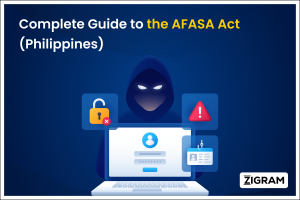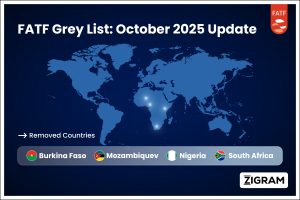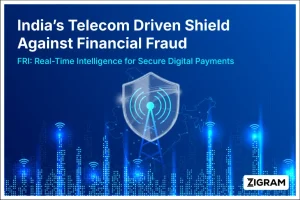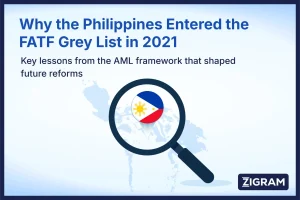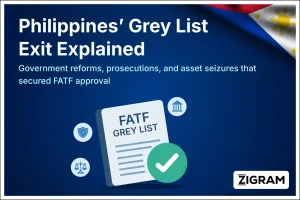Table of Contents
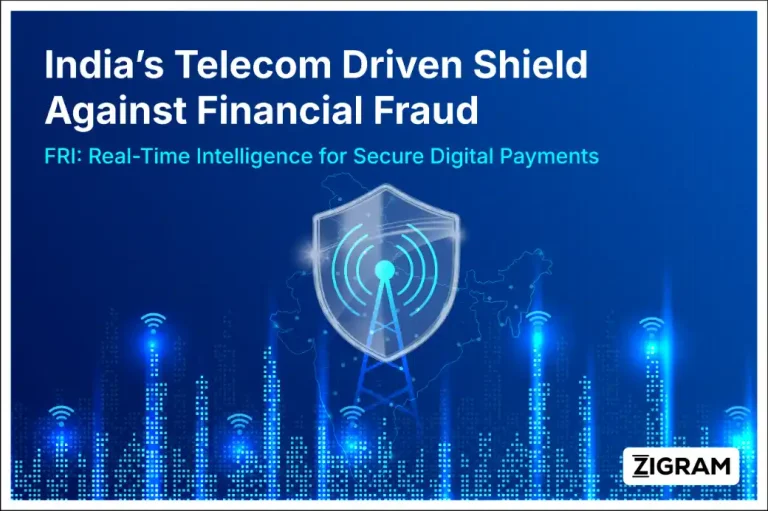
The Financial Fraud Risk Indicator (FRI) is a tool developed by the Department of Telecommunications (DoT) in India under its Digital Intelligence Platform (DIP). It was launched in May 2025 by the DoT’s Digital Intelligence Unit (DIU).
The purpose of the FRI is to assess and flag mobile phone numbers for their risk of association with financial fraud or cybercrime. It provides real-time risk assessment that can be used by banks, non-bank financial companies (NBFCs), UPI service providers, and other financial institutions. [1]
Why FRI Was Introduced and How It Works
Rising Cyber-Enabled Financial Frauds in India
India has seen a growing number of cyber-enabled financial frauds, especially via digital payments, phishing, identity misuse, SIM misuse, etc. With mobile phones and UPI becoming central to financial transactions, a lot of fraud or fraud attempts are facilitated via mobile number misuse. To preempt such issues, DoT introduced FRI to allow early detection and prevention of frauds before or as transactions occur. [2]
The tool is intended to enable proactive risk mitigation — rather than just after-the-fact enforcement. Banks and payment providers can use the risk indicators to add extra checks, alert users, slow/hold a transaction, or refuse it outright if risk is judged very high. [2]
How FRI Works — Methodology & Data Sources
Here are the key components of how the FRI assesses risk:
- Data Collection & Intelligence Inputs
- National Cybercrime Reporting Portal (NCRP) under the Indian Cybercrime Coordination Centre (I4C) which reports cybercrime, fraud etc. [1]
- Chakshu platform by DoT where citizens can report spam, fraud messages, etc., via SMS, voice, WhatsApp etc. [2]
- Intelligence shared by banks, financial institutions, payment service providers etc. [2]
- Risk Classification
Based on these inputs, mobile numbers get classified in one of three risk levels:- Medium risk
- High risk
- Very High risk [2]
- Mobile Number Revocation List (MNRL): The DoT also maintains and shares a Mobile Number Revocation List. This includes mobile numbers that have been disconnected for reasons such as involvement in cybercrime, failure in re-verification, or regulatory violations. Many of the numbers listed were used for fraudulent activity. [2]
To know more about this, read our related articles:
- Real-time Integration via APIs
- To make the tool usable, FRI risk assessments are made available in real time — i.e., banks, UPI providers etc., can query the system via API, check the risk classification of a mobile number involved in a transaction, and then take preventive or protective action before or during transaction processing. [2]
FRI Adoption by Banks and Fintechs: Regulatory Push and Key Use Cases
On 30 June 2025, the Reserve Bank of India (RBI) issued advisory directions to all scheduled commercial banks, small finance banks, payment banks, and co-operative banks to integrate FRI into their systems. Several leading banks and fintech companies are already using FRI (or are adopting it), including PhonePe, Paytm, HDFC Bank, ICICI Bank, Punjab National Bank, India Post Payments Bank. [3] The DoT sees API-based integration between its Digital Intelligence Platform and banking/financial systems as crucial, so that data can flow continuously and with feedback, so the predictive/risk model can improve over time. [4]
How Banks and UPI Providers Use FRI to Prevent Fraud
Here are what banks / UPI service providers can do using FRI:
- Blocking or declining transactions automatically if the mobile number is classified as Very High Risk. For example, PhonePe uses FRI under its PhonePe Protect feature with Very High risk numbers are blocked, while for Medium risk numbers a warning is shown. [2]
- Issuing user alerts or warnings when a transaction is being attempted with a flagged number. [1]
- Delaying or flagging transactions for further verification if the risk is high. For Medium risk, possibly soft signals; for high or very high risk, stronger action. [2]
- Preventing misuse of disconnected SIMs or numbers in revocation list — e.g. numbers in MNRL are known to have been used in fraudulent activity or regulatory violations, so transactions from those numbers are presumptively suspect. [2]
Impact of FRI: Early Outcomes and Fraud Prevention Benefits
Some early outcomes / observed benefits / metrics include:
- The FRI has enabled blacklisting (revoking) of over 300,000-400,000 SIM cards that have been found to be associated with fraudulent activities. [3]
- Early adopters (banks, UPI apps) have noted that the predictions (especially for “soft signals” / medium risk) have a reasonably high predictive value. In other words, many of the numbers flagged by FRI did turn out to have involvement in fraud or cybercrime. [2]
- Prevention of fraud before transaction settlement: transactions involving risky numbers have been blocked, warnings shown, etc. This saves both financial loss and reduces the burden of post-fact investigations. [2]
Strengths and Challenges of the Financial Fraud Risk Indicator
Key Strengths of the FRI Framework in Fraud Detection
- Multi-stakeholder Data Fusion By combining data from law enforcement / cyber-crime reports, telecom regulatory data, and financial institutions’ intelligence, the FRI has more information to detect patterns than any one entity alone. This helps detect emerging threats.
- Real‐time / Near Real‐time Capability
Integration via APIs allows for fast checks during transactions, which is crucial since many frauds occur in very short time windows. - Prevention Oriented
The focus is on early detection, prevention, and reducing risk rather than just after-the-fact criminal investigation. This is especially important in financial and digital payment ecosystems. - Regulatory Backing & Mandated Adoption
With RBI’s advisory, adoption of FRI is not optional for many regulated institutions. This helps ensure wide coverage and consistency of usage. - Revocation List (MNRL)
Disconnected numbers, which are often used for fraud schemes, are identified and shared to prevent reuse or further misuse.
Challenges and Limitations in Implementing FRI
While FRI is a promising initiative, there are certain challenges, constraints, or risks that need careful handling.
- False Positives / Over-blocking
- There is a risk that legitimate users may be flagged erroneously (especially for “Medium” risk). This could lead to legitimate transactions being delayed or blocked, leading to customer inconvenience and possibly reputational damage for banks/apps.
- Handling of warnings vs. blocks must balance security and usability.
- Timeliness & Accuracy of Data
- The quality of input data from portals like NCRP, Chakshu, and intelligence reports depends on how accurate, timely, and verified the reports are.
- Since many frauds are short-lived (e.g. SIM used for a few days then discarded), latency in detection/reporting can reduce the usefulness of predictive signals. DoT acknowledges the short life span of fraud-used numbers. [2]
- Scalability & Load
- With potentially billions of mobile numbers and a high volume of transactions, the system must be scalable to deliver risk-indicators with low latency and maintain API infrastructure.
- Banks and payment apps will have to integrate technically, maintain compliance, monitor integration, which involves cost and system change.
- Privacy, Data Protection, and Legal Concerns
- Since FRI involves sharing data about mobile numbers, possibly linked with fraud reports, there are concerns around privacy, ensuring data is protected, ensuring that innocent users are protected and have recourse if wrongly flagged.
- Compliance with laws (existing and new) about data protection, telecom regulation.
- Evolving Fraud Techniques
- Fraudsters change tactics; for example, they may use increasingly ephemeral or anonymised numbers; or rotate numbers; or use multiple devices.
- The risk models must be adaptive; continuous feedback loops are needed to retrain or adjust risk criteria.
- Inter-operability & Uniform Adoption
- Different banks/UPI apps etc may adopt different policies for handling FRI flags (some may block, some may only warn), which could lead to uneven protection.
- Ensuring that smaller banks, cooperative banks, rural players also integrate and implement properly is a challenge.
Broader Significance of FRI for India’s Digital Payments and Financial Security
- Enhancing trust in digital payments: India has been pushing for digital payments (e.g. UPI) and widespread internet/telecom penetration. Fraud is a major deterrent. FRI adds a layer of trust/security, which if properly implemented, could increase user confidence.
- Reducing losses & burden on enforcement: Preventing fraud ex-ante shifts the burden from policing and post-fraud recovery to prevention. Less financial loss for customers, fewer fraud investigations, less load on law enforcement bodies
- Regulatory precedent for cross-sector data sharing: FRI represents inter-agency cooperation — telecom, law enforcement/cyber crime, financial regulators. This could be a template for other domains (identity fraud, financial scams involving other vectors, etc.)
- Creating incentives for better operational hygiene: For example, telecom providers need to ensure proper verification, better monitoring of SIM issuance, revocation etc, so that numbers do not become sources of fraud.
- National standardisation: With RBI’s advisory and DoT’s framework, FRI may become a standard component in risk assessment for digital transactions, not just optional.
Recommendations and Future Outlook for the Financial Fraud Risk Indicator
- Transparency & Grievance Mechanisms
- Users who are flagged (especially Medium / High risk) should have a way to understand why, and be able to appeal or correct errors.
- Clear disclosure or “notice” mechanisms in apps/banks to let users know when a number is flagged and how to rectify it (e.g. verify identity, answer some questions).
- Periodic Review & Model Audits
- Risk classification models should be audited for performance (false positives / false negatives). Adjustment of thresholds should be data-driven.
- Privacy Safeguards
- Ensuring only required data is shared; ensuring no misuse of sensitive user info.
- Complying with India’s data protection frameworks (existing ones like the IT Act, rules, and forthcoming ones).
- Inclusive Implementation
- Ensuring all banks (large, small, cooperative), payment apps, NBFCs etc are on board; also ensuring technological support for smaller players.
- User Awareness
- Users should be informed about this system: what it does, why some transactions may be delayed/blocked; what recourse they have. This reduces confusion and mistrust
- Feedback Loops
- Financial institutions / telecom providers should share back with DoT / DIU data about whether flagged numbers did indeed commit fraud etc, so the risk scoring improves over time.
- Monitoring Impact
- Metrics like the number of prevented frauds, reduction in losses, user complaints, false positive rates, etc need to be collected and made available (possibly in aggregate) to assess efficacy and adjust.
- Adapting to New Threats
- Fraud techniques keep evolving (deepfakes, spoofing, SIM swaps, etc). FRI needs to integrate newer signals, perhaps device data, behavioural data, or transaction patterns (while preserving privacy).
Conclusion
The Financial Fraud Risk Indicator is a strong and timely intervention by the DoT in India’s ongoing fight against cyber-enabled financial fraud. By leveraging real-time data, multi-stakeholder inputs, and regulatory backing (via RBI), it promises to reduce fraud risk for consumers and financial institutions. However, its success will depend on careful implementation: balancing prevention and user convenience, ensuring accuracy, protecting privacy, and evolving the tool over time. If done well, FRI can be a model for integrating telecom intelligence into financial risk systems and a key pillar in building a safer digital payments ecosystem in India.
Bibliography
1. The Department of Telecommunications (DoT) Introduces “Financial Fraud Risk Indicator (FRI)” to strengthen Cyber Fraud Prevention – (India Brand Equity Foundation)
2. DoT introduces ‘Financial Fraud Risk Indicator’ to fight cyber fraud – (ETTelecom.com)
3. RBI advises banks to integrate DoT’s financial fraud technology – (The Economic Times)
4. DoT welcomes RBI advisory mandating banks to integrate financial fraud risk indicator – (ETGovernment.com)
- #GENIUSAct
- #Stablecoins
- #AML
- #FinancialCrime
- #Compliance
- #CryptoRegulation
- #FinCEN
- #SanctionsCompliance
- #RegTech
- #AntiMoneyLaundering
- #DigitalAssets
- #FinancialSecurity

